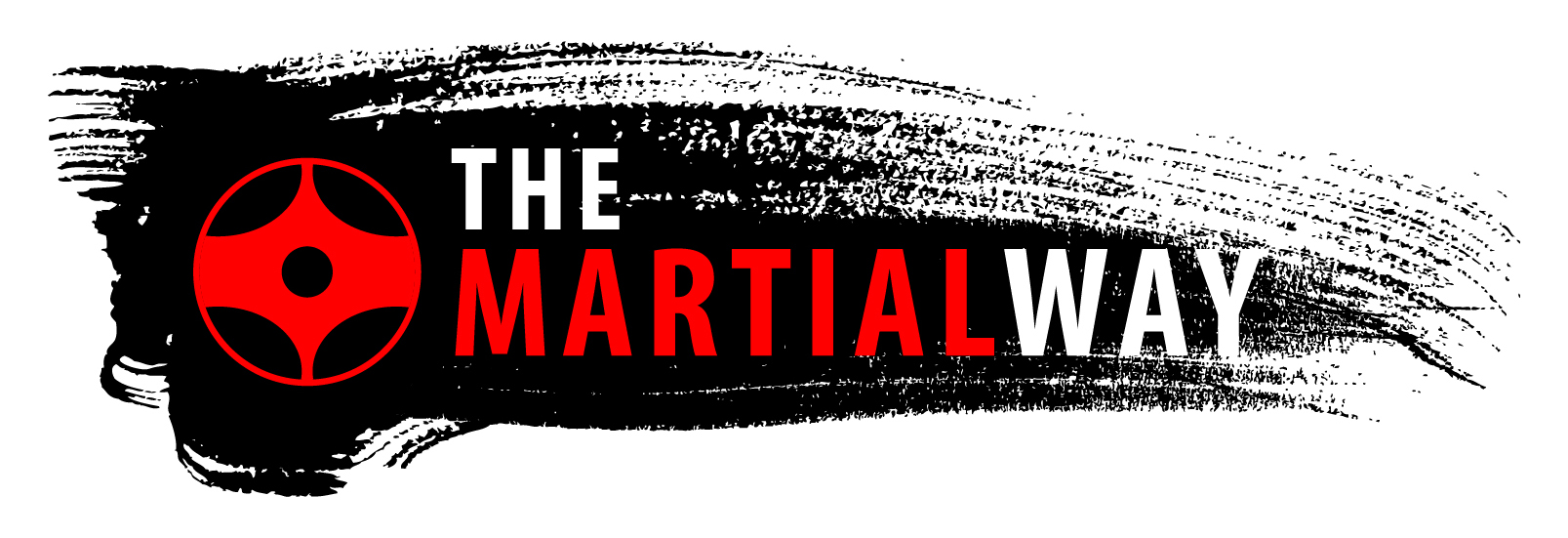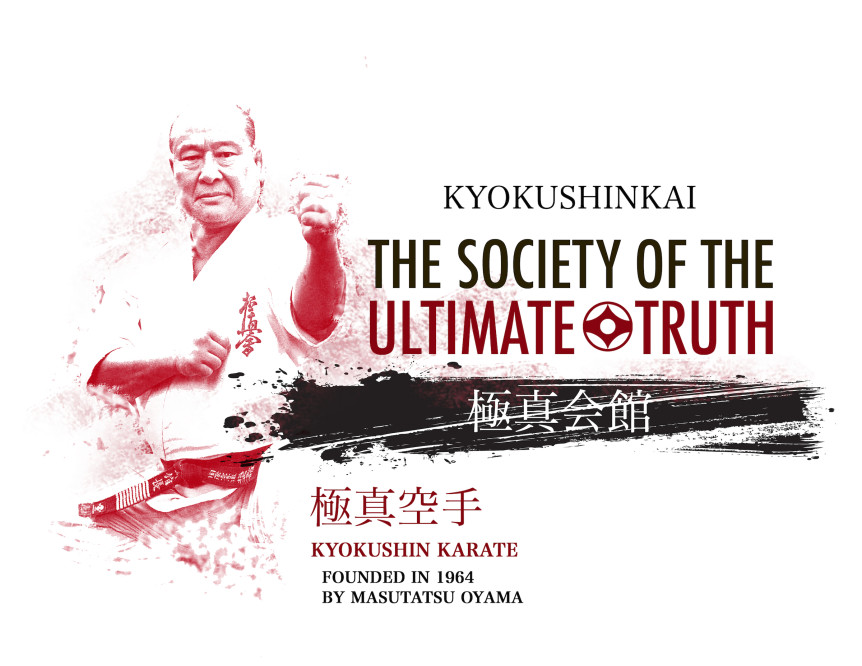The 20 Greatest Kyokushin Karate Fighters of All Time was first published by Liver Kick in 2013, with #20-17. This past year I continued the list for them #16 – 13. Due to time commitments I wasn’t able to complete the list, until now. However, I am posting the remainder of the list here on my own blog.
As mentioned in the first instalment, Kyokushin Karate was founded my Masutatsu “Mas” Oyama, and considered to be the first and most influential style of full contact karate, and one of the most hard-hitting, brutal, and intense forms of organized combat in the world. A style that has spawn fighters the likes of Andy Hug, Sam Greco and Georges St. Pierre, to name just a few. But aside from the big name kickboxers and MMA stars there lays an array of combat sports athletes whose neither names nor accomplishments often see the light of day.
As stated before, this is by no means the definitive list, and I am sure there are names missing, but I have done my best to complete the list with fighters based mainly on achievement, quality of competition and technical skill. The list is in no particular order, as it’s next to impossible to select one fighter over another, and further, it is something that no one would agree on. But I am sure we can all agree that the names on this list deserve recognition.
A little information on the different types of tournaments before we begin: A World Tournament includes every weight class. There are no divisions and no upper weight limit. Any Weight Tournament splits fighters into one of three weights: Lightweight (Under 70 kg) Middleweight (70 kg to 80 kg) and Heavyweight (Over 90 kg). That’s it. Pretty simple, right?
So far we have:
#20: Gary O’Neill
#19- Lechi Kurbanov
#18- Nicholas Pettas
#17- Ryu Narushima
#16: Makoto Nakamura
#15: Sam Greco
#14: Takashi Azuma
#13 Norichika Tsukamoto
So without further ado, here are #12 – 09 on the list….
#12: Kenji Kurosaki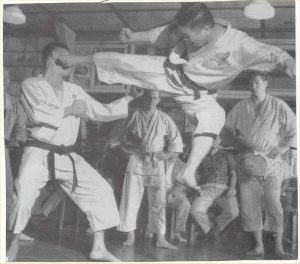
Nationality: Japanese
Kenji Kurosaki was born into a Samurai family, March 15th 1930, just outside of Tokyo. Originally he trained in Goju Ryu Karate under Gogen Yamaguchi, along side of Masutatsu Oyama. In 1953 Mas Oyama split to create his own style, to be called Kyokushinkaikan, and Kenji Kurosaki left with him to help develop it.
Kenji Kurosaki was known to be meanest of the mean and a fierce fighter in the dojo. In self-defence, he once killed a man who attacked him from behind with a short Japanese sword (wakizashi). He reacted immediately away to one side while blocking the attack smashing his fist against the attacker’s face. After an investigation Kurosaki was acquitted.
In the year 1964 the Thai’s challenged the Kyokushin organization of Mas Oyama to perform three bouts against their champions of Muay Thai. Oyama accepted the challenge, and Kenji Kurosaki was part of the Japanese team that traveled to Bangkok to face the Thai team.
The Japanese fighters were humbled by the power, athleticism and fighting style of the Thais. One of these fighters was Kenji Kurosaki who, despite being defeated, continued to pursue his goal of reaching the standards set in the rings of Bangkok. He was, however, to make his name as a trainer.
In 1976 he left to start his on dojo, the Mejiro Gym, (now called the Kurosaki Dojo) which quickly became, and still is, one of the leading Japanese Kick Boxing Dojos in Japan. Among his students, Kurosaki Sensei has had many great Champions, including Jon Bluming, who eventually became the only European to be promoted to 10th Dan in Japan. Dutch Kickboxing came out of the Mejiro style of kickboxing – that was developed by Kenji Kurosaki.
#11: Hiroki Kurosawa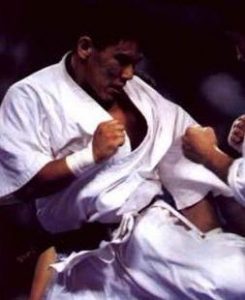
Nationality: Japanese
Achievements
- 6th World Tournament 1995 (IKO-1) — 6th (Lost to Yamaki)
- 5th World Tournament 1991 — 3rd (Lost to Midori)
- 4th World Tournament 1987 — 6th (Lost to Thompson – inj.)
- 25th All Japan Tournament 1993 — 6th
- 17th All Japan Tournament 1985 — 2nd
- 16th All Japan Tournament 1984 — 1st
- 10th All Japan Weight Tournament 1993 — 3rd
- 8th All Japan Weight Tournament 1991 — 4th
- 4th All Japan Weight Tournament 1987 — 2nd
Everyone who is familiar with the history of Kyokushin has heard about the legendary fighter Hiroki Kurosawa, or seen videos of his matches. To this day, Kurosawa remains a symbol of ruthless attacks and devastating low kicks. Relentlessly attacking and moving forward to simply destroy opponents. At one point Kurosawa‘s kicks were measured by a device to deliver 1420 pounds of striking power!
Kurosawa burst onto the tournament scene in 1984, when he became the first player to win the Japan Cup, in his first attempt. He continued the winning streak a year later, when he reached the final where he lost to Matsui.
In his first World Championships, he reached the quarter-finals, but he could not fight because of the numerous injuries he had suffered in the great victorious battle with the Dutchman – Peter Smit, a fight that became known as an example of “true Kyokushinkai Fighting Spirit”.
Four years later, in the fifth World Cup, he went a step further and reached the top four, where he lost to later champion – Kenji Midori. In 1995, in his third World Cup Kurosawa he achieved what could not be done be any other player – reaching the top eight for the third time. Unfortunately, he lost another fight with his old rival Yamaki, the later winner.
Kurosawa’s ‘push forward’ mentality, was daunting for fighter’s he faced, as he would try to cause as much damage as possible whilst waiting for the opportunity to make a mistake and then go for the KO.
#10: Glaube Feitosa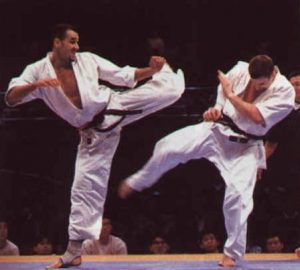
Nationality: Brazilian
Achievements
• K-1 World Grand Prix 2009 – Final 8
• K-1 World Grand Prix 2008 – Final 8
• K-1 World Grand Prix 2007 – Final 8
• K-1 World Grand Prix 2006 – Final 8 (3rd place)
• K-1 World Grand Prix 2005 – Final 8 (2nd place)
• 2005 K-1 World Grand Prix Runner Up
• 2005 K-1 World Grand Prix in Las Vegas Champion
• 2005 MVP in Kyokushin Karate World Cup in Paris
• 2003 No.4 in 8th Kyokushin World Open Tournament Championship
• 1999 No.4 in 7th Kyokushin World Open Tournament Championship
• 1997 2nd Place in All World Karate-do Championship-Heavyweight
• 1997 America’s Cup Karate-do Champion
• 1997 All South American Karate-do Champion
• 1997 All Brazil Karate-do Champion
• 1996 All Brazil Karate-do Champion
• 1995 No.8 in 6th Kyokushin World Open Tournament Championship
Glaube Araújo Feitosa is a Brazilian former kickboxer and a kyokushin full contact karate practitioner. In 2005, Feitosa won K-1 World Grand Prix 2005 in Las Vegas tournament and was a K-1 World Grand Prix 2005 finalist. While living in Tokyo, Japan he fought and trained in the IKO1 Kyokushin – Team Ichigeki at the Ichigeki Plaza.
Throughout his career he was known as one of the best non-champions to fight in the K-1, a position he earned with his wins over non-champion fighters, such as Ruslan Karaev, Musashi, Gary Goodridge and Junichi Sawayashiki. He also went the distance with some of the top fighters in his time, such as Peter Aerts, Remy Bonjasky, Semmy Schilt and Errol Zimmerman. He holds victories over Cheick Kongo and Alistair Overeem.
His signature move is his “Brazilian kick,” also known as the question-mark kick, which he managed to land on 6”11 Semmy Schilt!
His interest in karate started when Feitosa was a child, living in Sao Bernardo, in Sao Paulo state, Brazil. “I always liked to watch cartoons on TV and some of them were about karate. In addition to that my father found me very tall and thin, and he wanted me to gain some muscle and because of that I started to train kyokushin karate at the age of 12”.
#09: Shokei Matsui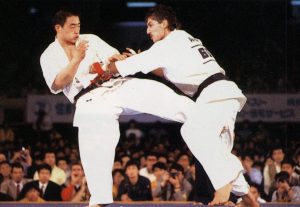
Nationality: Japanese
Achievements
• 1980 — placed 4th in the 12th All Japan Open Karate Championships, at age 17
• 1981 — took 3rd place in the All Japan Open Karate Championships
• 1982 — took 3rd place in the All Japan Open Karate Championships
• 1983 — placed 8th place in the All Japan Open Karate Championships
• 1984 — placed 3rd in the 3rd World Open Karate Tournament
• 1985 — placed 1st in the same event
• 1986 — placed 1st in the same event and completed 100 man kumite
• 1987 — won the 4th World Open Karate Tournament, becoming the youngest champion ever
Akiyoshi (Shokei) Matsui (also known by his Korean name of Moon Jang Gyu) is a legend of Kyokushin karate and the current Kancho (Director) of one faction of the International Karate Organization (IKO1) founded by Mas Oyama.
Matsui started training in Kyokushin karate at age 13. In 1976, he joined the Kita Nagare-Yama Dojo in Chiba Prefecture and attained the rank of 1st dan black belt in a little over one year. In 1980, Matsui placed fourth in the 12th All Japan Open Karate Championships when he was just 17. Soon after, he became Chief Instructor of the International Kyokushin Headquarters School, “Honbu” Dojo in Tokyo, Japan.
Both in 1981 and 1982, Matsui took 3rd Place in the All Japan Open Karate Championships and then 8th place at the same event in 1983. He earned worldwide recognition and admiration for his amazing spirit, strength, and determination when he took a remarkable Third place finish at the 3rd World Open Karate Tournament in 1984. He succeeded in winning the All Japan Championships in each of 1985 and 1986, and then successfully completed the ultimate Kyokushin challenge, the “100 Man Kumite” in record time. In 1987 became the youngest ever Champion of the World.
On April 26, 1994, founder Sosai Mas Oyama regrettably passed away, leaving the Directorship of the worldwide organization to Matsui, who became “Kancho” (Director).
Matsui is considered by many as the greatest technical fighter ever in Kyokushin and probably one of the greatest fighters it has produced, with timing & technical skills that are on another level.
Stay tuned for #08 – 05
